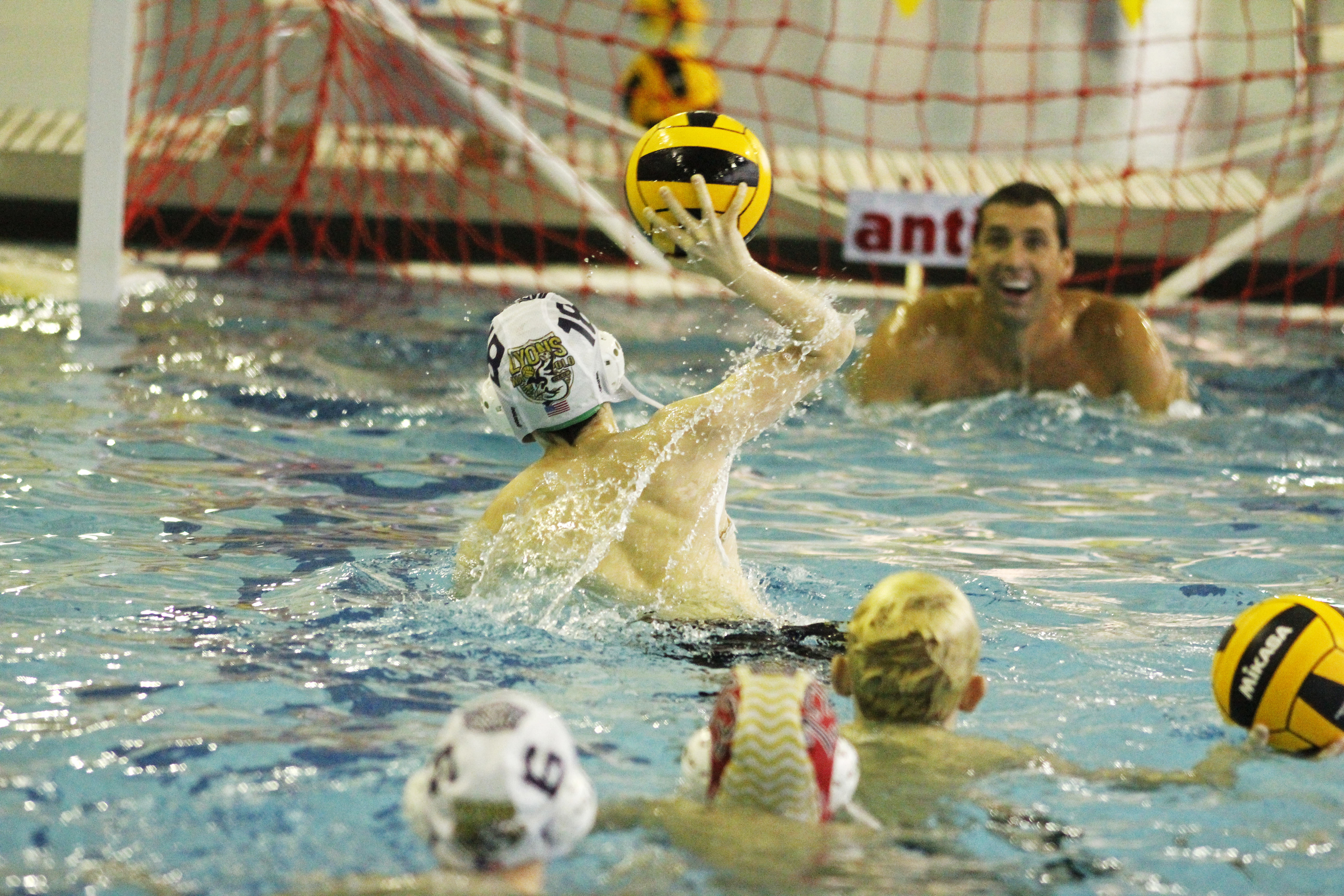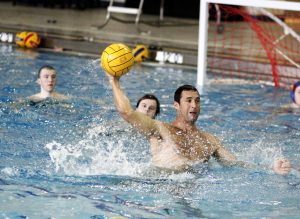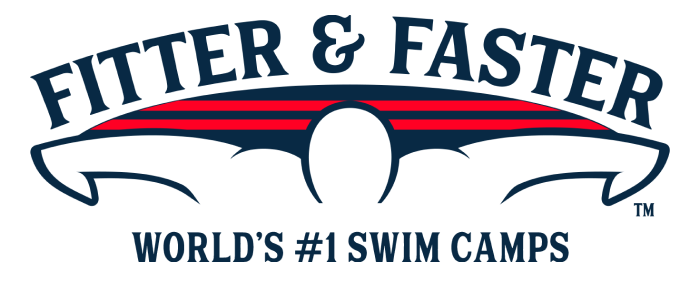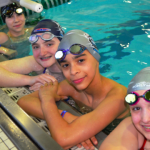Tips to Up Your Game
Fitter & Faster Tour is now producing Water Polo clinics throughout the United States. Our very first clinic was held in Western Springs, Illinois in 2014. It was a great success and we returned to the city in less than one year and once again had sold out clinics. We look forward to teaching the great sport of water polo to many more athletes throughout the United States in the years to come.

For those of you that know very little (or nothing) about the sport of water polo, we turned to Merrill Moses to give you a quick overview so you can understand the game a little bit better. Perhaps one day you’ll want to try it out. At the very least you’ll understand the game better when water polo is on television during the Olympic Games.
Merrill Moses was the Goalkeeper for Team USA at the last three Olympic Games – Beijing 2008 (Silver Medal), London 2012 and Rio 2016. Moses is also the current associate head water polo coach at Pepperdine University.
Water polo is an action packed game that some of the top swimmers in the world have grown to love.
Water polo is a mix of basketball, soccer and hockey.
- It is very much like basketball because the offense and defense revolve around a center and center defender. There are attackers that are in a formation around the center in a half circle arch that are trying to get the ball in to the center since the center is the closest offensive player to the goal. These attackers are also driving and running picks to get open.
- It is like soccer because there are two goals at each end of the course and players work as a team to score.
- It is like hockey because there are power plays where a player is excluded for 20 seconds and teams are playing a man up on offense and a man down on defense.
The water polo ball is the shape and roughly the same size of a volleyball, but it has grip on it so it is easier to handle in the water.
The object of the game is to score more goals then your opponent to win the game. Each goal only counts as one point.
On an Olympic Team there are 13 players that travel. There are eleven field players and two goalies. One goalie and six field players play each game at a time. Games allow for substitutions.
For the men, the “course” is 30 meters long by 20 meters wide. For the women, the course is 25 meters long by 20 meters wide. At the end of each course there are markers that mark the two-meter line and the five-meter line. The whole course is completely deep so you cannot touch the bottom. At the end of each course there are goals that are ten feet wide by three feet high. Also at the end of the course in the corner is the penalty box for when an athlete gets a 20 second exclusion for a major foul.
While a water polo game consists of four, eight-minute quarters, a full game usually lasts one hour. The reason it runs this long is because there is stoppage time with time-outs that last two minutes. There are also two minutes in between quarters and five minutes at halftime.
 On the men’s side the possession shot clock is set to 30 seconds and on the women’s side the possession shot clock is set for 35 seconds. Each quarter begins with a sprint to the half point in the pool to gain possession of the ball. All field players are only allowed to use one hand at a time to control the ball. The only player in the pool that can use two hands is the goalkeeper. The field players are constantly going from the horizontal swimming position to the vertical “eggbeatering” position. Eggbeatering is the term used for how water polo players stay balanced and stay in the vertical position without sinking. We are moving our legs vigorously in a circular motion, which looks like an eggbeater machine when you look at it being performed from underwater.
On the men’s side the possession shot clock is set to 30 seconds and on the women’s side the possession shot clock is set for 35 seconds. Each quarter begins with a sprint to the half point in the pool to gain possession of the ball. All field players are only allowed to use one hand at a time to control the ball. The only player in the pool that can use two hands is the goalkeeper. The field players are constantly going from the horizontal swimming position to the vertical “eggbeatering” position. Eggbeatering is the term used for how water polo players stay balanced and stay in the vertical position without sinking. We are moving our legs vigorously in a circular motion, which looks like an eggbeater machine when you look at it being performed from underwater.
There are two types of fouls in water polo: “minor” (ordinary) fouls and “major” (personal) fouls. There is no limit to the number of minor fouls a player may commit. In contrast, once a player has committed three major fouls, that player must leave the game and may not return.
Minor Fouls happen throughout the whole game. When a minor foul has occurred a player gets a free pass where the defender has to back up, but still may put her/his hand up to try and block the opposing pass. If the minor foul happens outside the five-meter line then the athlete can take a direct shot on goal.
A major foul usually consists of holding, sinking, or pulling back an opposing player. When a major foul occurs the defender is excluded for 20 seconds… and as stated before, once a player commits three majors in a game, the player is ejected.
A lot of the goals are scored in games that have several major fouls because “power play” opportunities are created in which an extra player is used to the offensive team’s advantage. The two-meter line often comes into play on power play opportunities because the offensive team is not allowed to go inside the two-meter line unless the player with the ball goes inside the two-meter line first, then the player’s teammates can follow. If an athlete goes inside the two-meter line before his/her teammate with the ball, the referee calls a turnover. This can also happen when you are playing six on six as well, so players have to be very aware of the two-meter line.

There also is a five-meter penalty foul. This foul is called when a player commits any kind of a foul in the penalty area (inside the five meter line) that, in the opinion of the referee, prevented a probable goal. Once this foul is awarded, an athlete gets to shoot a penalty shot at five meters on the referee’s whistle – just between an offensive player and the goalkeeper.
If you swim, I encourage you to give water polo a try. It is great cross training and will improve your swimming and endurance. Studies have shown that water polo is the most physically demanding sport in the Summer Olympics. Also who doesn’t like the combination of swimming, wrestling and throwing a ball as hard as you can in the goal, or in my case blocking it. I hope to see some of you out on the pool deck soon with a water polo ball in your hand.







